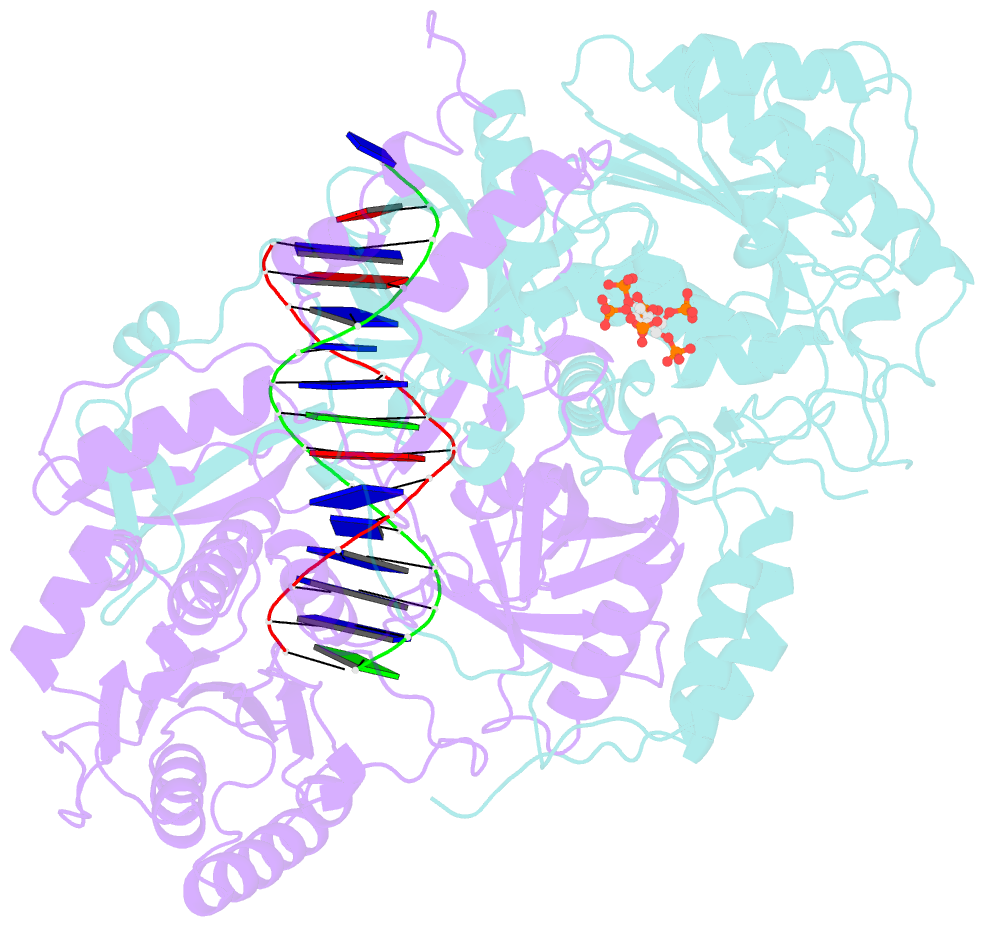Summary information and primary citation
- PDB-id
- 7z6o; SNAP-derived features in text and JSON formats;
DNAproDB
- Class
- DNA binding protein
- Method
- X-ray (3.7 Å)
- Summary
- X-ray studies of ku70-80 reveal the binding site for ip6
- Reference
- Kefala Stavridi A, Gontier A, Morin V, Frit P, Ropars V, Barboule N, Racca C, Jonchhe S, Morten MJ, Andreani J, Rak A, Legrand P, Bourand-Plantefol A, Hardwick SW, Chirgadze DY, Davey P, De Oliveira TM, Rothenberg E, Britton S, Calsou P, Blundell TL, Varela PF, Chaplin AK, Charbonnier JB (2023): "Structural and functional basis of inositol hexaphosphate stimulation of NHEJ through stabilization of Ku-XLF interaction." Nucleic Acids Res., 51, 11732-11747. doi: 10.1093/nar/gkad863.
- Abstract
- The classical Non-Homologous End Joining (c-NHEJ) pathway is the predominant process in mammals for repairing endogenous, accidental or programmed DNA Double-Strand Breaks. c-NHEJ is regulated by several accessory factors, post-translational modifications, endogenous chemical agents and metabolites. The metabolite inositol-hexaphosphate (IP6) stimulates c-NHEJ by interacting with the Ku70-Ku80 heterodimer (Ku). We report cryo-EM structures of apo- and DNA-bound Ku in complex with IP6, at 3.5 Å and 2.74 Å resolutions respectively, and an X-ray crystallography structure of a Ku in complex with DNA and IP6 at 3.7 Å. The Ku-IP6 interaction is mediated predominantly via salt bridges at the interface of the Ku70 and Ku80 subunits. This interaction is distant from the DNA, DNA-PKcs, APLF and PAXX binding sites and in close proximity to XLF binding site. Biophysical experiments show that IP6 binding increases the thermal stability of Ku by 2°C in a DNA-dependent manner, stabilizes Ku on DNA and enhances XLF affinity for Ku. In cells, selected mutagenesis of the IP6 binding pocket reduces both Ku accrual at damaged sites and XLF enrolment in the NHEJ complex, which translate into a lower end-joining efficiency. Thus, this study defines the molecular bases of the IP6 metabolite stimulatory effect on the c-NHEJ repair activity.





